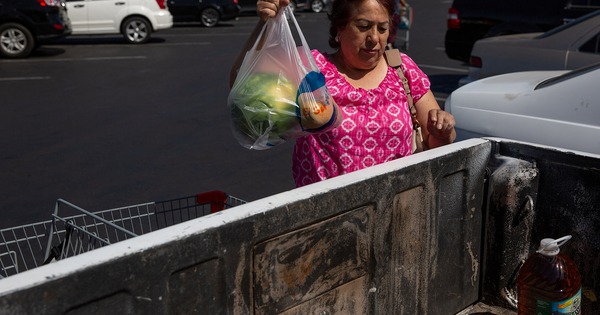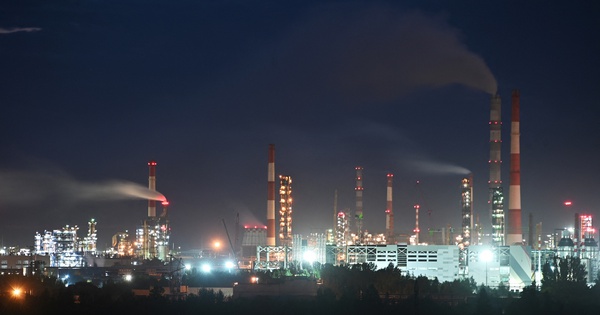What is the output for Russian oil in the midst of the embargo storm?
China and India can help save Russian oil, but they have not actively bought it because they want a better price.
On February 22, two days before Russia sent troops into Ukraine, a German-flagged cargo ship left the Russian port of Primorsk with 33,000 tons of diesel fuel. When it arrived at the British port of Tranmere on March 3, it was refused to load.
Similar boycotts have flared up elsewhere. Kayrros, a data company, estimates that total “above water” oil has increased by nearly 13% in the two weeks following the Ukraine crisis, largely because Russian oil is floating at sea in search of recipients. new. The number of ships returning to Russia also skyrocketed.
Most of the oil exported from Russia in recent weeks was purchased and paid for before the conflict began on February 24. Worries about sanctions, bad publicity and logistical headaches have caused many buyers to pause receiving Russian oil.
On March 24, the volume of Russia’s seaborne oil exports stood at 2.3 million barrels per day, nearly 2 million barrels lower than on March 1, according to data firm Kpler. When Russian oil cannot be sold, the price of Brent oil sometimes rises to nearly $120.
However, for countries willing to ignore public opinion, Russian oil is a bargain. This could make a lasting change to global trade patterns.
The embargo against Russia is somewhat similar to the Western pressure to block Iranian oil exports in the 2010s, forcing the country to find a way to bypass the narrow gap to bring oil abroad.

Kozmino oil loading and unloading port in Kozmino Bay, about 100 km east of the city of Vladivostok, Russia’s far east. Photo: Reuters
In May 2018, the US imposed “maximum pressure” sanctions, with the aim of completely blocking Iran’s oil exports. This approach has been generally successful. By October 2019, the country’s oil exports had fallen to an average of 260,000 barrels per day, from 2.3 million barrels before the sanctions. Since then, however, production has also gradually revived, averaging around 850,000 barrels per day in the three months to February 2022.
Iran has managed to sell oil through two channels. The first is selling under a limited authorization. When imposing sanctions, the US gives limited exemptions to eight importing countries. However, revenue must be paid in the buyer’s currency and kept in escrow accounts at local banks or spent on locally produced goods. For Iran, it is extremely disappointing. In December, the country was forced to accept tea from Sri Lanka to pay off a $251 million oil debt.
The second channel is smuggling. The Iranian tankers go to a country that confronts the US like Venezuela, with the radar transponder turned off for “stealth”. Some are repainted to conceal their provenance. Others often go at night, flying other countries’ flags.
Julia Friedlander, a former intelligence official now with the Atlantic Council, a Washington-based think tank, said oil is also transported overland by smuggling groups. Buyers in China, Turkey and the UAE return with gold, pesticides and even housing projects in Tehran. In Dubai, traders mixed one oil with another, changing the name to Kuwaiti oil.
However, with the current situation, Russia does not need to use Iranian methods because it faces weaker sanctions. Only the US banned the import of oil from this country and the US did not buy much. On March 25, Germany said it would cut its purchases in half, but it was not clear when it would start. Pipeline sales, which account for about one million barrels of Russia’s 7.9 million barrels per day production, are still growing. No secondary sanctions were issued either.
Exports by sea alone fell as major Western energy companies feared a public backlash. They also face financial and logistical problems as banks cautiously cut credit.
And every time the sanctions are adjusted, Antonia Tzinova, a specialist at the law firm Holland & Knight, said staff members have to study hundreds of pages of unclear legal documents, causing many Russian transactions. postponed because the companies didn’t think it was worth the trouble. As a result, the country’s Urals crude is trading at $30 per barrel less than Brent. Some are hoping this number rises to $40.
Meanwhile, two major countries, India and China, do not participate in Western sanctions. India is seizing the opportunity. The amount of oil arriving in the country is expected to reach 30,000 barrels per day in March, up from zero in the previous three months (excluding the Kazakh and Russian blends of CPC).
However, India unlikely to buy much, at least in the short term. Almost half of their imports already come from the Middle East. While some can be replaced with Russian oil, shipping from the Gulf is much cheaper, so Urals oil needs to be reduced in price to be attractive. In addition, because it cannot pay in USD, India has to experiment with the ruble-rupee mechanism.
That’s why the Indian Petroleum Corporation, the country’s largest refiner, ordered only 3 million barrels. Adi Imsirovic, Gazprom’s former head of oil sales and now a fellow at the Oxford Institute for Energy Studies, doesn’t think India can buy more than 10 million barrels a month. He considers this number to be small, as Russia’s sluggish oil production is forecast by the International Energy Agency to be around 3 million barrels per day next month.
Then only China Only Russia can be saved. They import a total of about 10.5 million barrels per day, or 11% of the world’s daily production. Imsirovic thinks China can take advantage of cheap opportunities to increase purchases to 12 million barrels per day. That could allow them to buy 60 million barrels from Russia in a relatively short time.
But this has not happened yet. One reason is that even with China, it is difficult to get oil from Russia. Russian oil usually takes three or four days to reach Europe, but to Asia takes up to 40 days. Oil had to be loaded onto much larger tankers, which took more time and cost more. Chinese banks are also not lending. Purchases must be made in RMB.
However, the bigger reason is that Chinese traders are patiently waiting for better prices. The goal is that even if it costs more, buying Russian oil will still save a lot of money. In 2020, when oil prices plummeted to single digits, they took advantage of hoarding. So, this time, they are waiting for Russia’s trade position to weaken for the Urals oil price to drop further before deciding to buy more.
Most refineries are set up to refine certain grades of crude oil. So the transition from the high sulfur Urals oil to the ultralight Saudi Arabian oil takes time and money. That shows how future Russian oil flows to Asia and Europe could reshape global markets.
Oil in the North Sea, much of which usually goes east, will stay in Europe. The continent will also likely buy more from West Africa and the Americas, while increasing imports of sulfur-rich oils from the Gulf. The rest of the world – including Asia – will have to content themselves with what Europe doesn’t want. Oil from Brazil’s Tupi field is now twice as high as Brent.
The result of this fragmented global oil distribution system will be higher prices for importers. Ben Luckock, Co-head of oil trading at trading company Trafigura, assesses that the world’s sophisticated oil distribution system is now disrupted.
Session An (According to The Economist)
at Blogtuan.info – Source: vnexpress.net – Read the original article here



